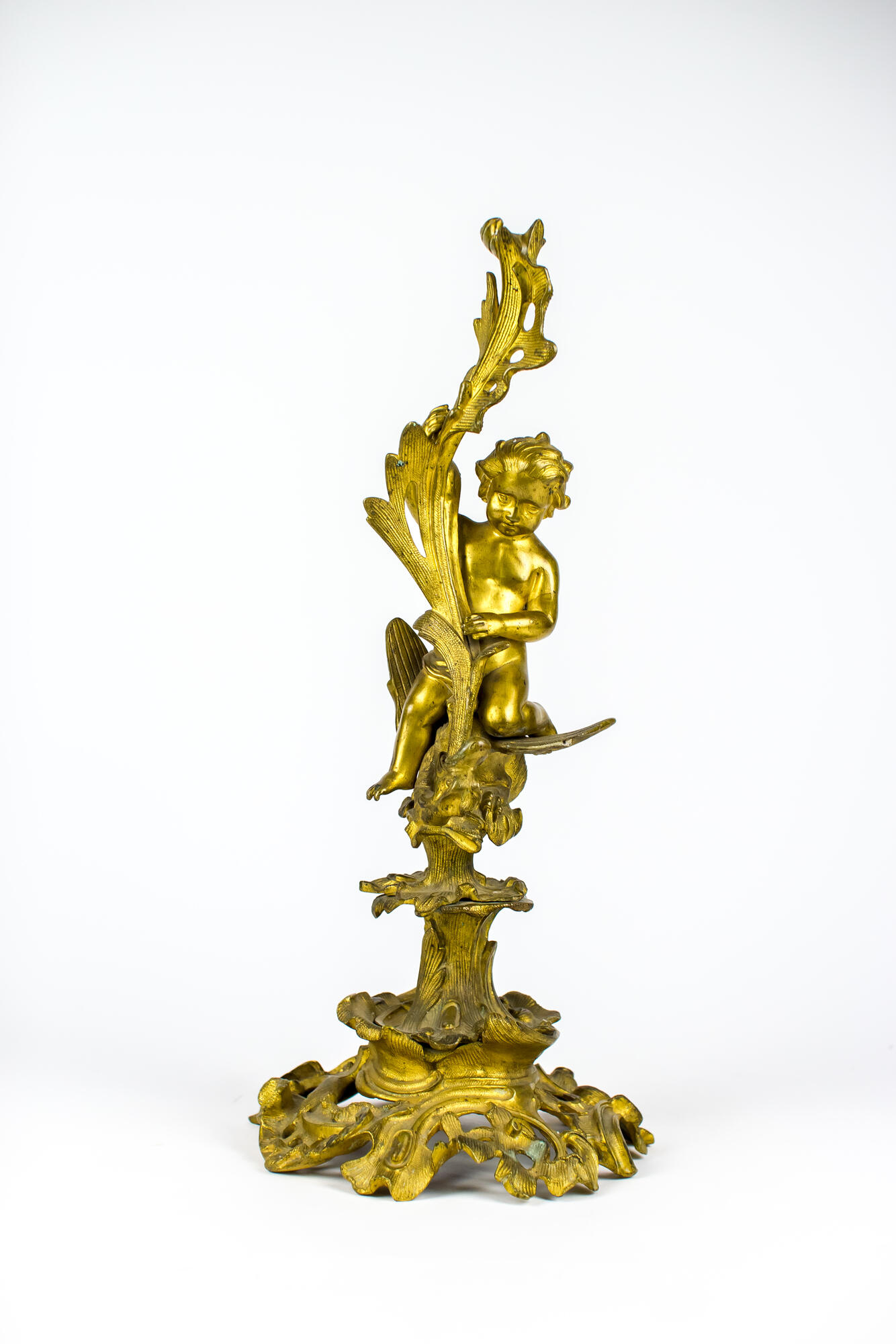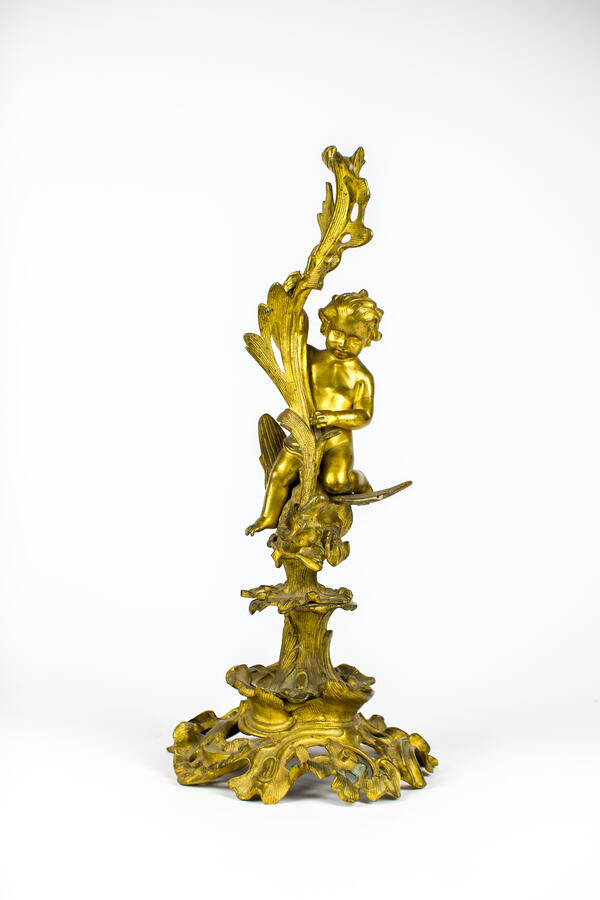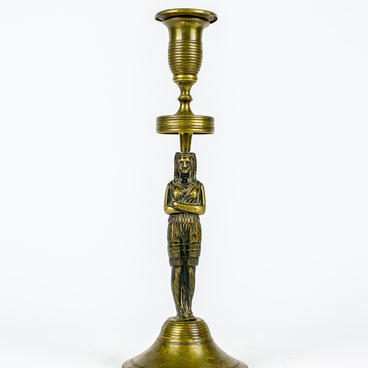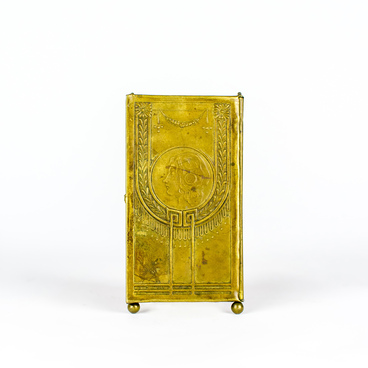The candlestick in the form of a cupid sitting astride a dragon belonged to one of the Tetyushsky merchant families. After the revolution of 1917, it was confiscated by the workers' and peasants' militia and transferred to the local history museum.
When in ancient times wax candles were used as a source of illumination, they were placed on ordinary stones. Then the stands began to improve — and so, there were candlesticks and candelabra, in which it was possible to fix several candles at the same time.
Initially, candlesticks were used only to protect the surfaces of tables and shelves from wax stains. And later candelabrum became a popular interior decoration. They were installed on tables, grand pianos, small bedside tables and tables.
According to an old superstition, it was impossible to put three candles on the table. It was believed that this was a bad omen there would be somebody dead in the house. Therefore, candelabrums with two candlesticks were most often used.
Until the 18th century, most of the candlesticks were cast from silver, and only later they began to be made from various ferrous metals or bronze. The price of such candelabrums was much lower than that of silver products, so ordinary citizens could afford them. Candlesticks began to be used even on the streets for night lighting.
In the old days, candlesticks were quite modest, with a carved balustrade or in the form of an ordinary rook, and in the 18th–19th centuries, more attention was paid to their decor. For example, products in the Baroque style were decorated with maple leaves and small flowers. Candlesticks in the classical style imitated antique columns and statues. The masters decorated the candlesticks with floral ornaments, images of mythological creatures or animals, as well as whole scenes from myths and legends.
In the 18th century, candlesticks made in the form of tulips were popular. The shape of the candlestick exactly copied the lines of the flower: there were leaves at the base, the rod imitated a flexible stem, and the cup resembled an open bud. At the end of the century, simple symmetrical shapes replaced floral ornaments. Most often at these time, low candlesticks were used with an uncomplicated decor in the form of alternating beads and lines resembling columns. They were designed for one candle and located on a strong round or square base. The same style of candlesticks was relevant at the beginning of the 19th century.
When in ancient times wax candles were used as a source of illumination, they were placed on ordinary stones. Then the stands began to improve — and so, there were candlesticks and candelabra, in which it was possible to fix several candles at the same time.
Initially, candlesticks were used only to protect the surfaces of tables and shelves from wax stains. And later candelabrum became a popular interior decoration. They were installed on tables, grand pianos, small bedside tables and tables.
According to an old superstition, it was impossible to put three candles on the table. It was believed that this was a bad omen there would be somebody dead in the house. Therefore, candelabrums with two candlesticks were most often used.
Until the 18th century, most of the candlesticks were cast from silver, and only later they began to be made from various ferrous metals or bronze. The price of such candelabrums was much lower than that of silver products, so ordinary citizens could afford them. Candlesticks began to be used even on the streets for night lighting.
In the old days, candlesticks were quite modest, with a carved balustrade or in the form of an ordinary rook, and in the 18th–19th centuries, more attention was paid to their decor. For example, products in the Baroque style were decorated with maple leaves and small flowers. Candlesticks in the classical style imitated antique columns and statues. The masters decorated the candlesticks with floral ornaments, images of mythological creatures or animals, as well as whole scenes from myths and legends.
In the 18th century, candlesticks made in the form of tulips were popular. The shape of the candlestick exactly copied the lines of the flower: there were leaves at the base, the rod imitated a flexible stem, and the cup resembled an open bud. At the end of the century, simple symmetrical shapes replaced floral ornaments. Most often at these time, low candlesticks were used with an uncomplicated decor in the form of alternating beads and lines resembling columns. They were designed for one candle and located on a strong round or square base. The same style of candlesticks was relevant at the beginning of the 19th century.



